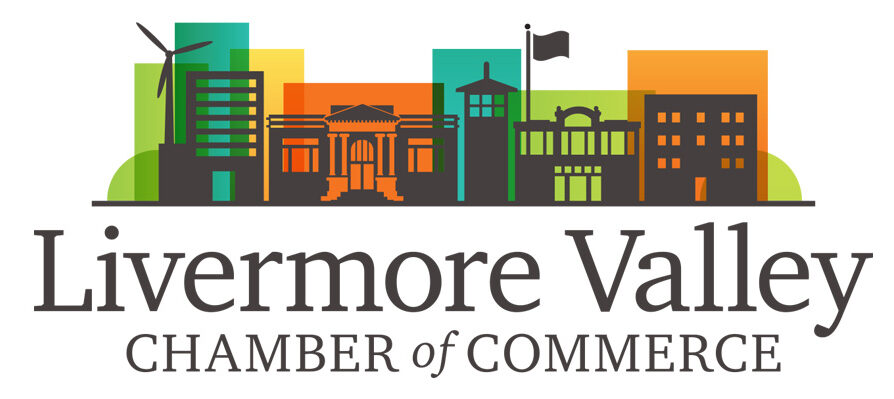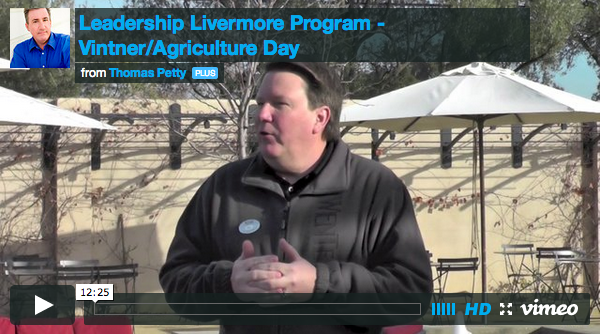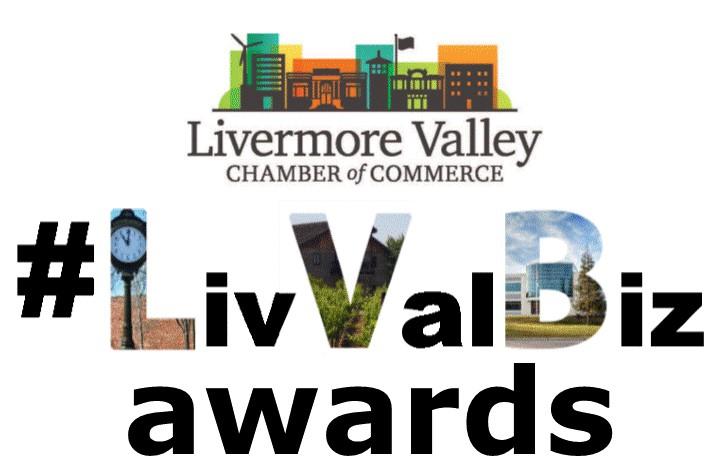Leadership Livermore Program – Vintner/Agriculture Day from Thomas Petty.
The Livermore Valley Chamber of Commerce holds their Leadership Livermore program every year from September through May of the following year. This is the second time I’ve enrolled (I did the program in 2007 and loved it so much, I came back again). Each month, one day is devoted to a specific topic, and this day, “Vintner/Agriculture Day”, was devoted to learning all about the wine industry and agriculture in the area. This is my personal perspective about the day, and the video is a vignette of what we participants experienced (there are about 25 of us in the program).
It’s January, but this year in California has been extremely unusual in that we’ve had NO rain since October, and it’s been warm and beautiful through the season. Normally, the winter is when it rains most, and the hills turn green. Right now, everything is brown and dried out, and the days are in in 60’s or 70’s (just gorgeous out).
We started the day at Wente Vineyard’s tasting room on Tesla Road. Bill (didn’t catch his last name) and Brad Mueller (I think that’s correct – a winemaker who has worked at Wente for 33 years) gave us a tour of where the wine is made. They showed us the machinery, discussed the history of the region and how wine pre-dates the Napa Valley, and how the Wente winery is the longest family-owned winery in the country. It’s been in existence for about 130 years.
We learned how the Tri-Valley region is situated in an east-west orientation, which is unique. Most of the agricultural valleys are oriented north and south. With the central valley heating up during he summer time, the rising air causes the marine layer to be pulled in from the nearby ocean, keeping the area much cooler during the summertime. This promotes great growth for grapes (and olives), because the region cools off at night, keeping the grapes from ripening too quickly.
We moved over to Murrieta’s Well, another nearby winery that is owned by Wente. The building itself was originally Carl Wente’s house in the 30’s. It’s named after Joaquin Murrieta, a local bandit that lived in the area in the 1800s, and the site is where an artesian well gave him water when on the lam.
While at Murrieta’s Well, we got to sample several varietals of red wine and learn about how Karl Wente loves to “compose” his symphony of flavors, using his palette of 30 different wines grown on the estates to create meritage wines. Our host was a veritable encyclopedia of factoids and interesting stories of the history of the area. He clearly knew his wines and could answer every question lobbed at him by our group.
After lunch, Phil Wente talked about the history of the winery, and how the area lends itself well to wine making.
Chris Chandler, Executive Director of the Livermore Valley Winegrowers Association talked about how Prohibition caused so many of the area’s wineries to shut down. Wente and Concannon survived by producing sacramental wine during the time, until it was repealed. At the time, there were only 12 wineries left, and now the region is flourishing with over 50 wineries.
Kellie Hayes from Tri-Valley Conservancy discussed how their organization has worked with area wineries and farmers to keep the area preserved from ever being developed into commercial or residential properties, and preserve the agricultural heritage of the area.
Finally, Charles Crohare from The Olivina talked about how the region not only supports wineries, but olive groves work well with the Mediterranean climate too. Charles and his father purchased the Olivina property in the 1930s, and planted 11,000 olive trees. They produce award winning olive oil that is certified by the California Olive Oil Council. It was fun tasting the different olive oils that Charles brought with him, and I had no idea that it’s a lot like wine tasting. Slurping it in to get the essence and tastes of the different oils was educational.
Our last stop was Concannon Vineyard just up the street. We got a tour of the grounds, and learned that most of the cabernet sauvignon vines were wiped out in the 60s because of a fungus. The vines at Concannon and Wente survived, and 80% of the cab vines in the state are from cuttings from these vines.
What was really fun was that during our tour, John Concannon appeared, and hung out with us. The group peppered him with questions, one of which was, “What your favorite part of your job?” His answer? “Doing this. Talking about wine.” He was relaxed, happy to just chat, and we ended the day with a clink of the glass, celebrating a good day together.








This is my first time attending this program. I have lived and worked in Livermore for over 12 years and thought I knew the history of the City and all it has to offer those who visit and live here. I now realize how wrong I was. This is an amazing program and so eye opening. It is so nice to not only meet with such a great group once a month and network but it has been great to learn more about all Livermore has to offer. I would highly recommend this program to anyone looking to expand their knowledge!
This is my first time attending the program and I am finding it so very helpful. I am relatively new to the Tri-Valley, having just moved here from Philadelphia in Nov. 2012, so this program is really teaching me a lot about not only Livermore, but the entire region. Plus, I love the diverse backgrounds of the people in the program because they come from different fields than my own (travel/tourism and PR/social media). An added benefit is that everyone I have encountered so far in Leadership Livermore is so friendly and so helpful. Plus, I really love how the program is structured. I feel like we get a lot of information in one class. I would highly recommend this program to anyone.